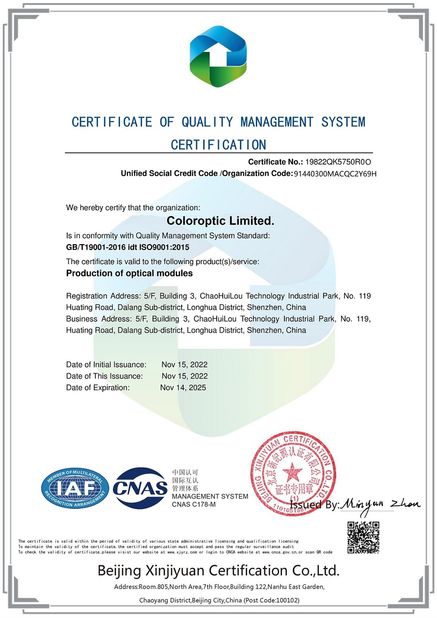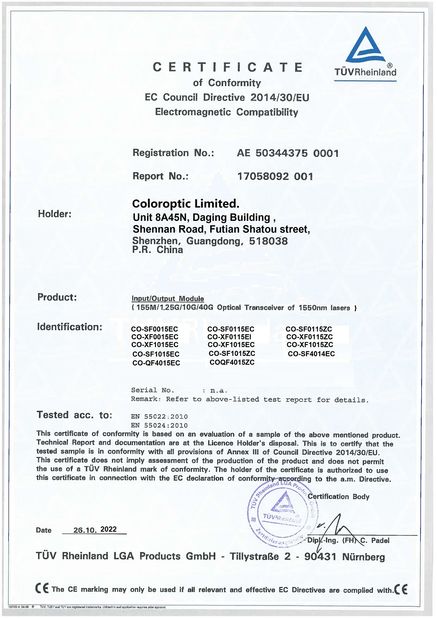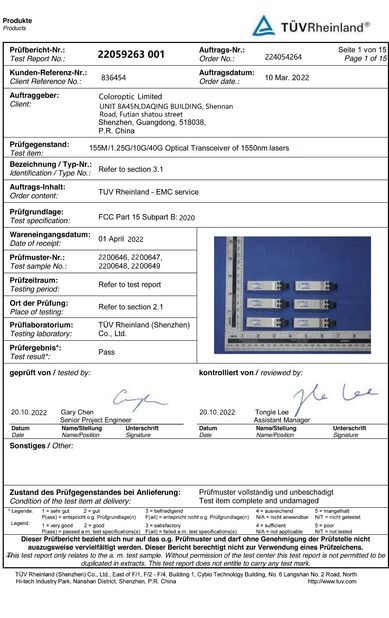-
Standard: ISO9001:2015Number: 19822QK5750R0OIssue Date: 2022-11-15Expiry Date: 2025-11-14
-
Standard: CENumber: AE503443750002Issue Date: 2022-10-16Expiry Date: 2025-11-20
-
Standard: FCCNumber: 22059263Issue Date: 2022-10-20Expiry Date: 2026-02-25
-
Standard: ROHSNumber: BTS181212094004CCIssue Date: 2022-10-26Expiry Date: 2026-12-30
Quality Control Prifile
Quality control for mass production in an our factory:
1. Incoming Material Inspection:
- Thoroughly inspect all incoming materials, including optical components, electronic components, PCBs, and housing.
- Verify the quality, specifications, and compliance of each component with the approved standards.
- Conduct visual inspections and perform necessary tests to ensure proper functionality.
2. In-Process Quality Control:
- Implement regular inspections and tests at various stages of the manufacturing process.
- Monitor assembly procedures, soldering quality, and component placement accuracy.
- Conduct functional tests to ensure proper signal transmission, power consumption, and temperature control.
3. Final Product Testing:
- Perform comprehensive testing on finished optical transceivers.
- Conduct optical performance tests, such as signal integrity, sensitivity, and transmission distance.
- Verify electrical characteristics, including voltage levels, power consumption, and electromagnetic compatibility.
4. Reliability Testing:
- Subject a representative sample of the produced transceivers to rigorous reliability tests.
- Conduct environmental tests, including temperature cycling, humidity exposure, and vibration testing.
- Perform accelerated aging tests to ensure long-term reliability and durability.
5. Documentation and Traceability:
- Maintain detailed records of all inspections, tests, and measurements performed throughout the production process.
- Ensure proper traceability of components used in each unit of the transceivers.
- Document any deviations or non-conformities discovered during quality control processes.
6. Continuous Improvement:
- Regularly review quality control processes and identify areas for improvement.
- Implement corrective actions to address any identified issues or non-conformities.
- Foster a culture of continuous improvement to enhance overall product quality.
![]()







